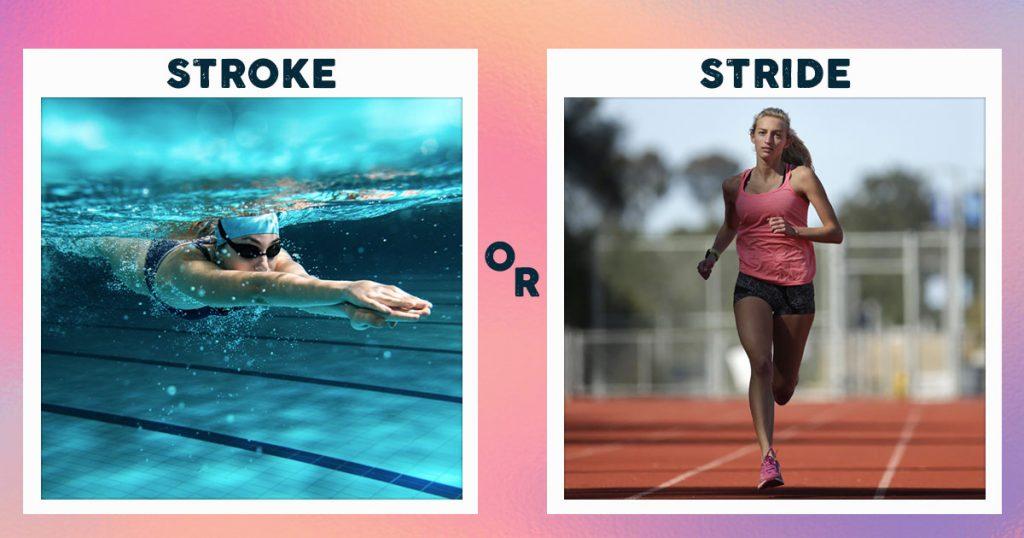Swimming and running are two of the most popular cardio exercise options. Both offer excellent cardiovascular benefits and can help you stay fit and healthy. However, some significant distinctions between the two may make one a better fit for you based on your goals, physical abilities, and personal preferences.
Swimming vs. Running: The Cardio Exercises
Swimming and running are great for your heart and help you stay fit. They’re even part of triathlons! Both activities are awesome for improving your heart health and burning calories.
Swimming gets your heart pumping, tones your upper and lower body muscles, and burns calories. Plus, it’s gentle on your joints. Running also makes your legs stronger and burns calories. Since it involves lifting weights, it can also help keep your bones strong.
Running and swimming provide specific advantages catering to various fitness goals and tastes.
Advantages of Running
- Calorie Burn: Running typically burns more calories per minute than swimming, making it effective for weight management.
- Bone Health: It is a weight-bearing workout that can make bones stronger and lower the risk of getting osteoporosis.
- Convenience: You can run almost anywhere, requiring minimal equipment.
- Cardiovascular Health: Running is excellent for improving heart health and boosting overall cardiovascular fitness.
- Mental Health Benefits: Running can alleviate stress, anxiety, and despair by releasing endorphins.
Advantages of Swimming
- Low Impact: Swimming is good for people with joint pain or arthritis because it is easy on the joints.
- Full-Body Workout: It works many muscle groups simultaneously, so you work out your whole body.
- Improved Flexibility: The range of motion in swimming can enhance flexibility, particularly in the shoulders and hips.
- Respiratory Benefits: Swimming requires controlled breathing, which can help your lungs grow and your breathing work better.
- Cooling Effect: Swimming keeps you cool, making it a great exercise option in hot weather.
Your choice between running and swimming depends on your fitness objectives, preferences, and physical constraints. Incorporating both activities into your routine can provide a balanced workout that targets different muscle groups and offers a range of health benefits.
Does swimming burn more calories than running?
One of the most common questions people have when comparing swimming and running is which exercise burns more calories. Calorie burning is crucial for weight loss and maintaining a healthy weight. During any activity, the number of calories you burn depends on your body weight, how hard you work out, and how long you work out.
Calorie Burn in Swimming
Swimming works many muscles at once and burns calories. The calorie burn depends on the stroke and how hard you swim. An average-sized person who weighs 155 pounds can burn about 233 calories by swimming slowly for 30 minutes. If they swim quickly, they can burn about 372 calories.
Calorie Burn in Running
Running is also great for burning calories. The number of calories you burn is based on your weight, how fast you run, and how long you run. If someone weighs 155 pounds and runs 5 miles per hour for 30 minutes, they will burn about 298 calories. If they run 6 miles per hour, they can burn around 372 calories simultaneously.
In terms of calorie burning, both swimming and running are highly effective. However, running tends to burn slightly more calories than swimming, especially at higher intensities. As a result, if your primary goal is to burn calories, running may provide a modest advantage.
Running or Swimming: Which burns fat more?
Swimming and running are both excellent fat-burning exercises. Running may burn many calories rapidly, especially if you run fast. However, it might be taxing on your joints. Swimming works out your whole body and is easier on your joints, but it might not burn as many calories as running in the same amount of time. If you want to lose fat, the best workout is one that you enjoy and can do regularly. Running, swimming, and a healthy diet can help you lose fat.
When should I consider swimming and running?
Your exercise preferences, physical condition, and goals will help you decide between swimming and running. Swimming and jogging provide various health benefits, but the impact, muscle engagement, and overall effectiveness differ.
Swimming may be considered better than running if:
- You have joint pain or arthritis: Swimming is a low-impact workout that is easy on the joints, making it an ideal choice for people with joint problems.
- You want a full-body workout: Many muscle groups are worked at the same time when you swim, so it’s good for both your upper and lower bodies.
- You prefer a cooling workout: Swimming keeps you cool, making it an ideal exercise choice in hot weather.
Running may be considered better than swimming if:
- You want to burn more calories in less time: Running typically burns more calories per minute than swimming, especially at higher intensities.
- You want to improve bone density: Running is a weight-bearing exercise that can boost bone health and lower the risk of osteoporosis.
- You prefer a convenient workout: Running can be done almost anywhere and requires minimal equipment, making it a convenient exercise option.
Both swimming and running offer unique benefits, so incorporating various exercises into your routine can help you achieve your overall fitness and health goals.
Swimming vs. Running: Which is the better cardio exercise?
Swimming may be better than running, depending on your exercise goals and personal tastes. If you have problems with your joints or just want a low-impact workout for your whole body, swimming is a great choice.
On the other hand, running may be more beneficial for those looking to burn calories quickly or improve bone density. Both exercises offer unique advantages, so incorporating a mix of both into your routine can provide a well-rounded fitness regimen. To reach your fitness goals, it’s important to pick workouts that you enjoy and can do every day.
